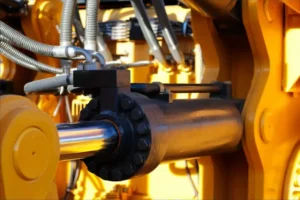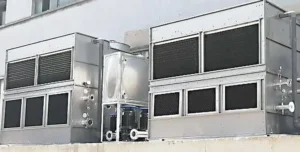ইন্ডাকশন চুল্লি ধাতব গলনা শিল্পে সরঞ্জামের একটি গুরুত্বপূর্ণ অংশ, offering superior control over the heating process compared to other furnace types. যাহোক, to maintain its efficiency and prolong its lifespan, daily maintenance is essential. Whether your induction furnace is used in a foundry, smelting operation, or any industrial metalworking environment, taking proper care of this vital equipment is necessary to prevent downtime, improve operational safety, and reduce repair costs.
In this blog, we’ll outline the essential daily maintenance tasks for an Induction furnace and provide practical tips for keeping your furnace in optimal condition.
Check Electrical Components and Connections
The heart of an induction furnace is its electrical system, which includes the power supply, induction coil, and control components. Any malfunction in these parts can lead to significant production downtime.
- Inspect the power supply system: Ensure the power supply is stable and functioning. Look for any unusual signs of voltage fluctuations or abnormalities in the control panel.
- Examine electrical connections: Regularly inspect the electrical connections for any loose terminals or signs of corrosion. Tighten or clean them as necessary to prevent electrical failures.
- Inspect the induction coil: The coil is subjected to constant heat and electromagnetic stress. Check for any signs of wear, cracking, or deformation. If any damage is detected, it should be repaired or replaced immediately.
Monitor Cooling System
The cooling system is integral to maintaining the temperature of the furnace’s electrical components, especially the induction coil and the power supply. If the cooling system fails, the furnace can overheat, leading to damage.
- Check coolant levels: Ensure that the coolant is at the recommended level, and top up if necessary. Over time, coolant can evaporate or become contaminated, reducing its cooling efficiency.
- Inspect cooling lines for blockages: Inspect the coolant pipes for any blockages, leaks, or cracks. Blockages in the system can lead to localized overheating and potential system failure.
- Examine the cooling pump: Ensure the cooling pump is functioning correctly and circulating the coolant throughout the system. A malfunctioning pump can cause the furnace to overheat, leading to potential damage.
Check for Metal Residue and Contamination
Metal residue and slag buildup inside the furnace can negatively affect its performance. They can obstruct the heating process, reduce melting efficiency, and even damage the induction coil.
- Remove metal residues and slag: After each melt cycle, carefully clean the interior of the furnace, removing any slag or metal residues. Use appropriate tools such as scrapers or vacuum systems to avoid damaging internal components.
- Inspect furnace linings: Over time, the furnace lining can wear down due to constant exposure to heat. Inspect the linings for cracks, erosion, or pitting, and replace them if necessary.
Inspect and Clean the Furnace Doors
Furnace doors are exposed to extreme temperatures and need to be regularly checked for wear and damage.
- Check the sealing system: Ensure that the seals on the furnace doors are intact and functioning properly. A faulty seal can result in heat loss, lowering efficiency and increasing energy costs.
- Clean the door surfaces: Regularly clean the furnace doors to prevent the buildup of residue, which can impact the sealing or cause the door to become difficult to open and close.
Examine the Furnace’s Load and Vibration
The load on an induction furnace can affect its overall performance and longevity. Overloading can lead to overheating, while improper load distribution can cause excessive wear.
- Ensure proper load distribution: Verify that the furnace load is evenly distributed to avoid overheating and undue stress on the equipment.
- Monitor vibrations: Excessive vibration can signal alignment issues or problems with the induction coil. Use a vibration sensor to monitor the furnace’s operational stability and address any abnormal readings.
Check Safety Systems
Safety is paramount in any industrial setting. An induction furnace is equipped with various safety mechanisms to protect both the equipment and personnel from accidents.
- Test emergency shutdown systems: Ensure that emergency stop buttons and automatic shutdown systems are working properly in case of electrical faults, overheating, or other hazardous conditions.
- Inspect alarms and sensors: Test all safety alarms, including temperature, চাপ, and cooling system alarms, to ensure they are in working order. Malfunctioning sensors can lead to dangerous operating conditions.
Record Operational Data and Issues
Keeping a log of the furnace’s daily operational data is essential for tracking its health and performance. This record can help identify patterns or recurring issues, enabling proactive maintenance before they escalate into major problems.
- Track temperature and power usage: Record the furnace’s operating temperature, শক্তি খরচ, and any deviations from standard operating parameters. This data can provide insight into furnace efficiency and potential issues.
- Note any unusual behavior: Record any unusual noises, vibrations, or performance drops. These could be signs of underlying problems that need to be addressed.
Perform Routine Calibration
Over time, the furnace’s controls may drift, leading to inaccuracies in temperature regulation and power output. Routine calibration ensures that the furnace is operating at optimal settings.
- Calibrate temperature and power controls: Perform daily calibration checks to ensure that the furnace is maintaining accurate temperature settings and power levels. Use precision instruments to verify the furnace’s performance.
উপসংহার: Keeping Your Induction Furnace in Top Shape
The daily maintenance of an induction furnace is essential to ensuring its longevity and reliable operation. By following these steps—checking electrical components, monitoring the cooling system, cleaning residue, inspecting doors, and maintaining safety systems—you can prevent costly repairs, minimize downtime, and enhance the overall efficiency of your furnace.
মনে রাখবেন, proactive maintenance is always more cost-effective than reactive repairs. By dedicating time to daily upkeep, you’re not only extending the life of your furnace but also improving the quality of the metal you’re processing, which translates into better results for your operations.







